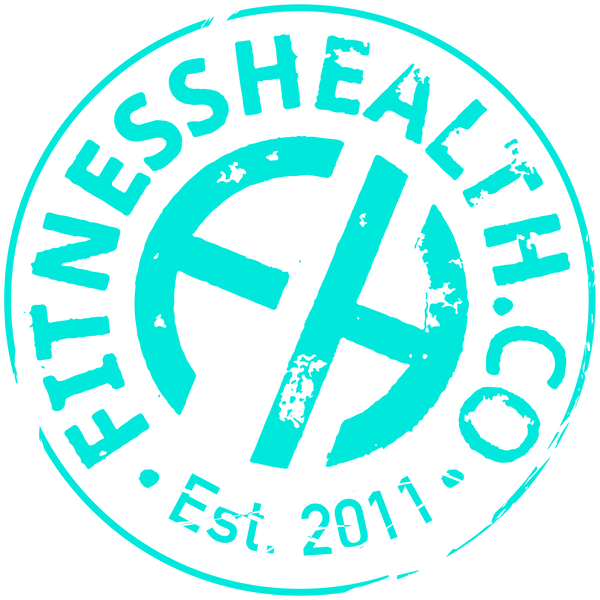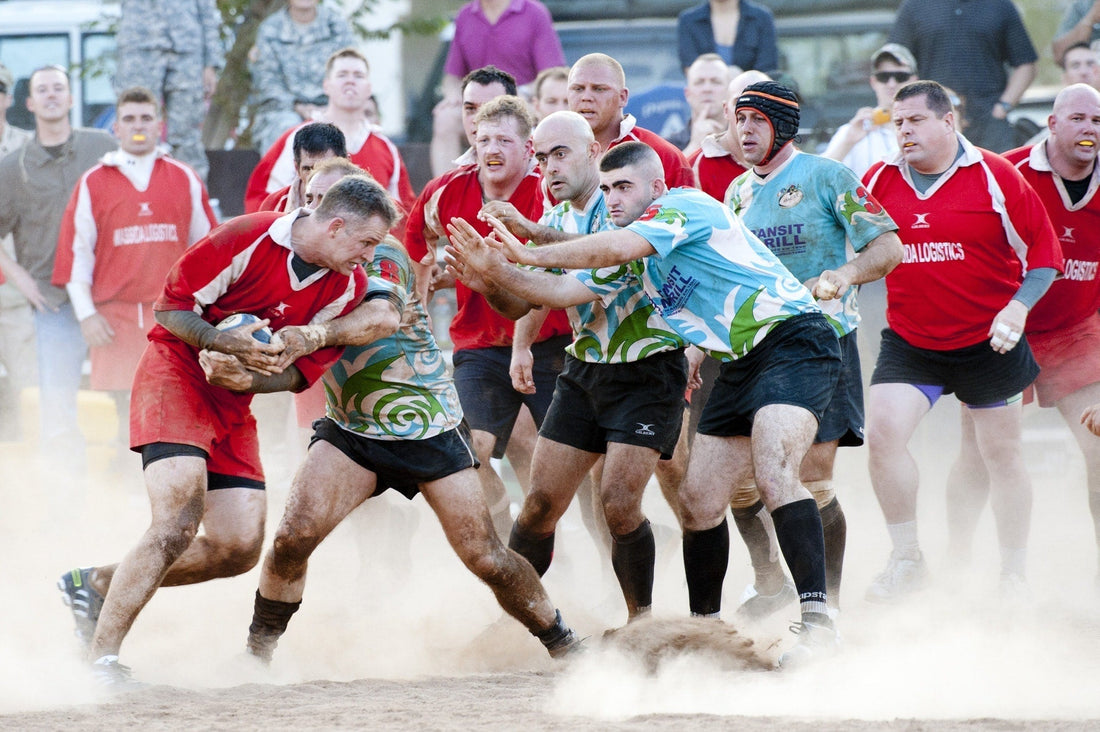After 15 years as a strength and conditioning coach working with everyone from weekend warriors to Olympic medalists, I've seen firsthand how the right facilities and equipment can make or break athletic performance. The tools that surround your training aren't just accessories—they're essential partners in your athletic journey.
Introduction to Athletic Equipment
The evolution of athletic equipment has been nothing short of revolutionary. When I first started coaching, we relied on basic equipment and intuition. Today, we navigate a landscape transformed by technology, sports science, and innovative techniques and materials.
Modern athletes benefit from equipment designed not just for performance enhancement, but also injury prevention, faster recovery, and precise tracking of metrics once available only in sports science laboratories. The right gear doesn't create champions on its own, but it does remove barriers that might otherwise limit potential.
I've watched successful athletes transform their performance after finding equipment that addresses their specific needs—whether it's running shoes that properly support their gait, compression gear that enhances recovery, or technology that provides immediate feedback on movement patterns.

Types of Equipment
Athletic equipment generally falls into several key categories, each serving distinct purposes in an athlete's development:
Training Equipment: The tools that directly challenge your body during workouts—weights, resistance bands, medicine balls, and sport-specific training aids. I've found that durable, versatile, multi-purpose equipment typically delivers the best value for most athletes.
Recovery Tools: Perhaps the most overlooked category, yet critical for sustainable progress. This includes everything from foam rollers to compression boots to contrast bath systems and cold therapy tool . The athletes who prioritize recovery equipment often enjoy longer careers with fewer injuries.
Performance Wear: Technical apparel designed to enhance comfort, regulate temperature, manage moisture, and sometimes provide biomechanical advantages. The difference between basic cotton and high-performance fabrics becomes apparent during extreme conditions or prolonged activity.
Monitoring Devices: The explosion of wearable technology has revolutionized how we track progress and physiological responses. Heart rate monitors, GPS watches, power meters, and sleep trackers provide insights into specific areas that were once available only to elite athletes with team resources.
Let's explore the essential equipment that deserves consideration in your athletic toolkit.
Recovery and Rehabilitation
Foam Rollers and Self-Myofascial Release
If I could recommend just one piece of equipment to every athlete I work with, it would be a quality foam roller. Self-myofascial release (SMR) has transformed how athletes approach wellness, tissue quality, and mobility.
The science is compelling: foam rolling helps break up adhesions between muscle fascia, increases blood flow to tissues, and can significantly reduce delayed onset muscle soreness (DOMS). I've seen athletes increase range of motion by 10-15% after just one thorough foam rolling session.
Top picks based on my experience:
-
Trigger Point GRID Foam Roller: The patented design with different surface patterns provides varying pressure to effectively target different muscle groups. Despite years of heavy use with my athletes, these rollers maintain their shape and effectiveness.
-
RumbleRoller: For athletes who need deeper tissue work, this aggressive roller with firm nodules can reach trigger points that standard rollers miss. I recommend this for experienced athletes who have developed good tolerance to SMR.
-
Hyperice Vyper 3: For those willing to invest more, this vibrating foam roller adds another dimension to recovery. The vibration helps penetrate deeper tissues and reduces the pain typically associated with foam rolling. Several of my professional athletes swear by this for travel recovery.
Pro tip: Foam rolling is most effective when done both before and after training. Pre-workout rolling should be brief (30-60 seconds per muscle group) to improve tissue quality without causing fatigue, while post-workout sessions can be more thorough (1-2 minutes per area).

Massage Therapy for Athletes
While not equipment in the traditional sense, I consider massage tools essential components of an athlete's recovery arsenal. The research consistently shows that massage therapy services can reduce inflammation, improve circulation, and speed recovery between training sessions.
Top massage tools worth considering:
-
Theragun Prime: Percussive therapy devices have revolutionized self-massage. The Prime offers excellent depth and precision for targeting specific muscle groups. I've seen particularly good results using it on quads, hamstrings, and calves after high-intensity sessions.
-
Hypervolt Go: More compact than the Theragun and quieter too, making it ideal for team environments or travel. The battery life is impressive, lasting through an entire team's treatment session.
-
Tiger Tail Rolling Muscle Massager: For a non-electronic option, this manual roller allows you to control pressure precisely and target small areas like the IT band or forearms that can be harder to address with larger devices.
Pro tip: For best results, use massage tools when muscles are warm—either after training or after a warm shower. Start with lighter pressure and gradually increase as tissues relax.

Performance Enhancement Equipment
The right performance equipment can unlock new levels of training stimulus and athletic development. These tools bridge the gap between basic movements and sport-specific demands.
Essential performance enhancers:
-
Resistance Bands (Complete Set): Perhaps the most versatile training tool available. I use bands with athletes for warm-up activation, resistance training, accommodating resistance (combined with free weights), mobility work, and rehabilitation. A complete set with multiple resistance levels costs relatively little but offers tremendous value.
-
Suspension Trainer (TRX or similar): The ability to adjust body position to increase or decrease difficulty makes suspension training appropriate for virtually any fitness level. The instability element engages core musculature in nearly every movement, which transfers well to athletic performance.
-
Olympic Weightlifting Shoes: For athletes performing Olympic lifts or squats, proper weightlifting shoes with raised, incompressible heels improve ankle mobility, enhance stability, and promote better positioning. Many athletes immediately improve their squat depth and mechanics the first time they wear proper lifting shoes.
-
Agility Ladder: Simple but effective for developing foot speed, coordination, and neuromuscular connection. I program ladder drills not just for speed athletes but also for team sport players who need to enhance change-of-direction capabilities.
Pro tip: Invest in equipment that addresses your specific limiters. If ankle mobility restricts your squat, you may want to purchase weightlifting shoes as your priority. If core stability affects your performance, a suspension trainer could deliver the greatest returns.

Compression Therapy for Injury Prevention
Compression garments have evolved from simple elastic supports to sophisticated gradient pressure systems backed by solid research. The evidence suggests compression works through several mechanisms to alleviate swelling :
- Improving venous return and reducing blood pooling
- Reducing muscle oscillation during activity
- Enhancing proprioception (body position awareness)
- Potentially accelerating clearance of metabolic waste
Compression options I recommend:
-
Graduated Compression Socks: Particularly beneficial for runners and endurance athletes, these provide greatest pressure at the ankle that gradually decreases up the leg, enhancing circulation. CEP and 2XU make models that maintain their compression levels even after multiple washes.
-
Compression Tights: Full-leg compression can reduce muscle soreness after high-intensity or high-impact training. Look for models with appropriate pressure gradients rather than just tight fabric.
-
Pneumatic Compression Boots: Systems like NormaTec or Air Relax represent the premium tier of compression recovery. These sequential compression devices systematically compress the limbs to enhance circulation and lymphatic drainage. While expensive, many athletes find them game-changing for recovery, especially during heavy training blocks.
Pro tip: For daily training, wear compression during and immediately after workouts. For competitions or key training sessions, consider wearing compression garments during overnight recovery as well—research shows this can enhance next-day performance.

Running and Endurance Equipment
Running requires remarkably little equipment compared to many sports, but the few pieces you do need matter tremendously. The difference between appropriate and inappropriate running gear can quite literally make or break a training cycle, especially regarding safety .
-
Properly Fitted Running Shoes: This deserves its own article, but in short: get fitted at a specialty running store where gait analysis is performed. Different foot types, running mechanics, and training purposes require different shoe characteristics. I see too many injuries from runners choosing shoes based on aesthetics or brand loyalty rather than function.
-
GPS Running Watch: The ability to accurately track pace, distance, heart rate, and even running dynamics provides invaluable data for training optimization. Garmin, Coros, and Polar all offer excellent options at various price points. The insights gained from structured training guided by accurate metrics can translate to performance breakthroughs.
-
Hydration Solutions: For runs exceeding 60 minutes, carrying fluids becomes essential. Options range from handheld bottles to waist belts to hydration vests, each with its own advantages. My ultrarunners swear by vests with front-mounted soft flasks that allow easy access without disrupting running form.
-
Anti-Chafing Products: Never underestimate how something seemingly minor like chafing can derail training. Products like Body Glide or 2Toms SportShield can prevent painful skin irritation during long runs.

Running Recovery Strategies
Running places unique demands on the body, particularly the repetitive impact forces that can accumulate over high-mileage weeks. Recovery tools specific to runners' needs in this world clude:
-
Foot Recovery Tools: Devices like the Foot Roller or Moji Foot Pro allow runners to address plantar fascia tightness, a common precursor to more serious foot problems. Used for 2-3 minutes per foot daily, these simple tools can prevent many foot-related training interruptions.
-
Recovery Sandals/Shoes: Brands like OOFOS, HOKA, and PR Soles make recovery footwear with maximum cushioning and support. Slipping into these immediately after long runs or races helps reduce foot fatigue.
-
Ice Bath Setup or Contrast Bath System: While somewhat controversial in research, many elite runners remain committed to cold water immersion for recovery. A dedicated setup that makes this practice convenient increases compliance and effectiveness.
Lower Body Recovery and Support
The lower body absorbs tremendous forces during most athletic activities, making it particularly prone to overuse issues and fatigue. These tools can help maintain lower body health:
-
Knee Sleeves: Neoprene knee sleeves provide compression, warmth, and proprioceptive feedback that can improve knee tracking during movements. For athletes regularly performing squats or jumps, quality knee sleeves from brands like Rehband or SBD can reduce knee stress.
-
Ankle Stability System: For athletes with history of ankle sprains, products like the Active Ankle T2 provide external support during high-risk activities while still allowing necessary movement.
-
Hip Circles/Bands: These small resistance loops are specifically designed for hip activation exercises. Regular use before training helps engage glute muscles properly, improving movement patterns and reducing injury risk.

Foot Care and Maintenance
Athletic feet take tremendous punishment. These tools help maintain foot health and function:
-
Toe Spacers: Products like YogaToes or Correct Toes help counteract the toe deformation that often results from wearing conventional shoes. Using these for 15-30 minutes daily can improve toe splay and foot mechanics.
-
Foot Massage Ball: A simple golf ball or specialized foot massage ball can work wonders for plantar fascia health when rolled under the foot for a few minutes daily.
-
Proper Athletic Socks: Technical athletic socks with targeted cushioning, arch support, and blister-prevention features make a noticeable difference in foot comfort during training.
Calisthenics and Bodyweight Training
Bodyweight training offers tremendous benefits with minimal equipment requirements. These essentials maximize what you can accomplish:
-
Gymnastics Rings: Perhaps the most versatile strength training tool available. Rings allow for progressive difficulty in upper body exercises from assisted dips and rows for beginners to advanced movements like the iron cross for elite athletes. The instability of rings engages stabilizer muscles at a much higher level than fixed equipment.
-
Parallettes: These portable parallel bars enable proper hand positioning for movements like L-sits, handstand push-ups, and dips. The elevated position also increases range of motion for many exercises.
-
Pull-up Bar: The foundation for upper body pulling strength. Whether doorway-mounted, wall-mounted, or freestanding, a stable pull-up bar opens up dozens of essential exercises for upper body development.

Home Fitness and Training
Creating an effective home training environment requires thoughtful equipment selection:
-
Adjustable Dumbbells: Space-efficient systems like PowerBlocks or Bowflex SelectTech provide a full range of weights in the footprint of a single pair of dumbbells. The ability to quickly change weights keeps training sessions flowing efficiently.
-
Quality Jump Rope: For conditioning that requires minimal space, nothing beats the jump rope for efficiency. Speed ropes for fast footwork, weighted ropes for increased upper body engagement, and beaded ropes for outdoor use all serve different training purposes.
-
Kettlebells: Even a few strategically selected kettlebells (typically 16kg, 24kg, and 32kg for men or 8kg, 12kg, and 16kg for women) enable hundreds of exercises that develop strength, power, and conditioning simultaneously.
-
Plyo Box: Used for both plyometric training and as a versatile platform for many bodyweight exercises. Adjustable height boxes provide the most training options.

Sports Science and Technology
The democratization of sports technology has put professional-level monitoring at the center of reach for serious recreational athletes:
-
Heart Rate Variability (HRV) Monitor: Systems like Whoop or apps that work with chest straps provide insights into recovery status and readiness to train. This objective data helps prevent overtraining and optimizes training timing.
-
Force Plates or Jump Mats: These tools measure power output during jumps, providing objective feedback on explosive strength and fatigue. Even simple jump mats that measure jump height can guide training decisions regarding intensity and volume.
-
Velocity-Based Training Tools: Devices like GymAware or PUSH measure movement speed during strength exercises, allowing for precise training based on power output rather than just weight lifted. This approach has revolutionized how coaches program strength training for athletes.

Buyer's Guide and Equipment Selection
When investing in athletic equipment, consider these building principles:
-
Prioritize Based on Training Frequency: Invest most in the equipment you'll use most often. For daily runners, premium running shoes are worth every penny. For weightlifters, quality barbells and plates deliver the greatest return.
-
Consider Space Constraints: Choose versatile, compact equipment if training space is limited. Resistance bands, suspension trainers, and adjustable dumbbells offer maximum training variety in minimal space.
-
Focus on Durability: Cheap equipment that breaks quickly is more expensive in the long run than quality gear that lasts years. Research warranties and read reviews focusing on longevity.
-
Try Before Buying When Possible: Especially for items like shoes, massage tools, or compression gear where individual fit matters tremendously.
-
Consider the Training Environment: Equipment that works well in climate-controlled gyms might not perform in garage gyms with temperature fluctuations or outdoor training environments.
Conclusion and Final Thoughts
The right athletic equipment amplifies your natural abilities and removes limitations that might otherwise restrict your progress. However, no equipment can replace consistent training, proper nutrition, adequate recovery, and intelligent programming to achieve optimal performance .
I encourage athletes to invest progressively in their equipment arsenal, starting with the fundamentals that address their specific needs and adding specialized tools as their training evolves. Even small improvements in equipment quality can yield significant enhancements in training effectiveness and enjoyment.
Remember that the best equipment is the equipment you'll actually use consistently. A simple foam roller used daily will deliver far greater benefits than an advanced recovery system that remains in the closet. Choose tools from the best schools that integrate seamlessly into your training routine and address your specific limiters and goals.
The journey of athletic development is lifelong, and your equipment needs will evolve alongside your capabilities. Stay curious about innovations that might enhance your performance, but remain critical and evidence-based in your approach to adopting new technology. The best athletes balance openness to new methods with healthy skepticism, letting results—not marketing—guide their equipment choices.
What's your essential piece of athletic equipment? The one item that's made the biggest difference in your training? I'd love to hear your experiences in the comments below.










